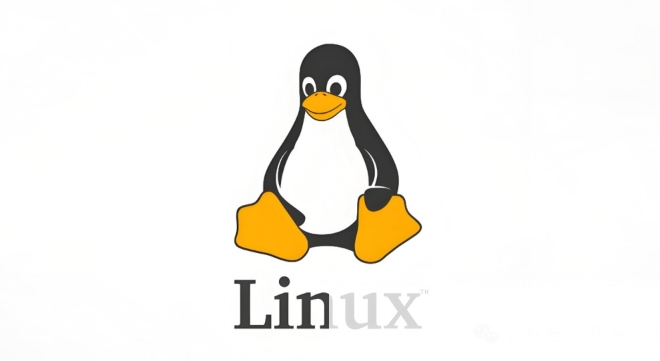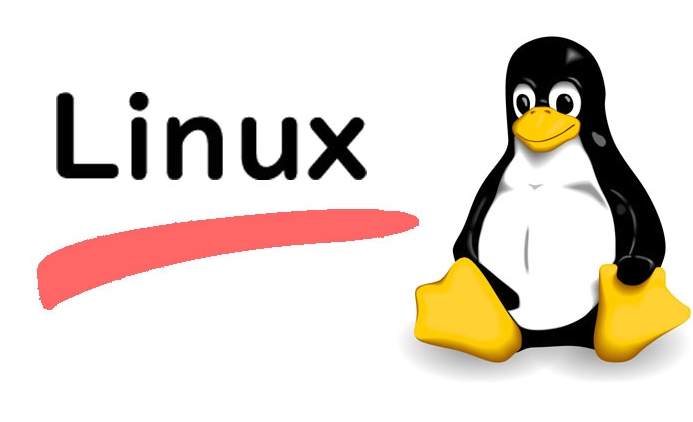SELinux enforces Mandatory Access Control by using security contexts and system-wide policies to restrict access beyond traditional Unix permissions. 1. Ensure SELinux is enabled in enforcing mode via /etc/selinux/config and reboot. 2. Use semanage fcontext for persistent labeling and restorecon to apply, ensuring correct file contexts. 3. Analyze denials with ausearch and generate policy modules using audit2allow only when necessary. 4. Adjust behavior using SELinux booleans like httpd_can_network_connect with setsebool -P for persistence. Best practices include never disabling SELinux in production, maintaining consistent labeling, monitoring audit logs with sealert, keeping policies minimal, and testing changes in permissive mode before enforcement, ensuring robust system security through proper configuration and proactive policy management.

SELinux (Security-Enhanced Linux) is a Linux kernel security module that provides a mechanism for supporting Mandatory Access Control (MAC). Unlike traditional Discretionary Access Control (DAC), which relies on user-based permissions (like owner/group/other), SELinux enforces system-wide policies that restrict what processes and users can do, regardless of traditional Unix permissions. This makes it a powerful tool for hardening Linux systems against misconfigurations, privilege escalation, and unauthorized access.

Here’s how SELinux implements MAC and how you can effectively use it.
Understanding Mandatory Access Control in SELinux
In a MAC model, access decisions are made based on centrally defined policies, not user discretion. SELinux labels every process, file, directory, port, and network resource with a security context—a label that includes user, role, and type (or domain). The core of SELinux enforcement lies in these labels.

For example, the Apache web server runs in the httpd_t domain, and web content is labeled with httpd_sys_content_t. SELinux policy rules dictate that only processes in the httpd_t domain can read files labeled httpd_sys_content_t.
Even if a user or process has full DAC permissions (e.g., root), SELinux can still deny access if the policy doesn’t allow it.

You can view security contexts using:
ls -Z /var/www/html ps -ZC httpd
Key Components of SELinux Policy Enforcement
SELinux operates in three main modes:
- Enforcing: Policy is actively enforced (recommended for production).
- Permissive: Policy violations are logged but not blocked (useful for debugging).
- Disabled: SELinux is turned off (not recommended).
Check current mode:
getenforce sestatus
The main policy types include:
- Targeted Policy: Most common; only targeted processes (like httpd, sshd) are protected.
- MLS (Multi-Level Security): Used in high-security environments (e.g., government).
SELinux policies are written in a specialized language and compiled into binary format. Custom policies can be created using tools like audit2allow.
Practical Steps to Implement SELinux MAC
1. Ensure SELinux is Enabled and in Enforcing Mode
Check status:
sestatus
If disabled, enable it via /etc/selinux/config:
SELINUX=enforcing SELINUXTYPE=targeted
Reboot to apply.
Note: Always test in permissive mode first when deploying on new systems.
2. Use Standard SELinux Tools to Manage Contexts
Labeling files correctly is crucial. Use:
chcon– change context temporarilysemanage fcontext– set persistent file context rules
Example: Allow a custom web root:
sudo semanage fcontext -a -t httpd_sys_content_t "/custom-web(/.*)?" sudo restorecon -R /custom-web
This ensures the label survives file system relabeling.
3. Handle Denials with audit2allow
When SELinux blocks an action (visible in /var/log/audit/audit.log or via ausearch), use:
ausearch -m avc -ts recent
Then generate a policy module:
audit2allow -M mypolicy -l -i /var/log/audit/audit.log semodule -i mypolicy.pp
Use this sparingly. Overuse weakens security. First, consider fixing the root cause (e.g., incorrect labeling).
4. Manage Booleans for Common Adjustments
SELinux provides booleans to toggle certain behaviors without writing new policies:
# Allow httpd to connect to the network setsebool -P httpd_can_network_connect on # List boolean related to httpd getsebool -a | grep httpd
The -P flag makes the change persistent across reboots.
Best Practices for Secure SELinux Deployment
- Never disable SELinux in production. Work with it, not around it.
-
Label files consistently using
semanage, not justchcon. -
Monitor audit logs regularly for denials (
ausearch,sealert). - Use
sealert -a /var/log/audit/audit.logto get human-readable explanations. - Keep policies minimal—only allow what’s necessary.
- Test policy changes in permissive mode before switching to enforcing.
Conclusion
SELinux provides robust Mandatory Access Control that significantly improves system security when properly configured. While it has a steep learning curve, understanding security contexts, using semanage, and responding to denials with audit2allow (judiciously) allows you to enforce fine-grained access controls beyond traditional Unix permissions.
The key is consistency: label everything correctly, use built-in tools, and treat denials as policy gaps—not reasons to disable SELinux. With proper setup, SELinux becomes a silent guardian, blocking unauthorized access even when DAC fails.
Basically, it’s not about avoiding SELinux—it’s about mastering it.
The above is the detailed content of Implementing Mandatory Access Control with SELinux on Linux. For more information, please follow other related articles on the PHP Chinese website!

Hot AI Tools

Undress AI Tool
Undress images for free

Undresser.AI Undress
AI-powered app for creating realistic nude photos

AI Clothes Remover
Online AI tool for removing clothes from photos.

Clothoff.io
AI clothes remover

Video Face Swap
Swap faces in any video effortlessly with our completely free AI face swap tool!

Hot Article

Hot Tools

Notepad++7.3.1
Easy-to-use and free code editor

SublimeText3 Chinese version
Chinese version, very easy to use

Zend Studio 13.0.1
Powerful PHP integrated development environment

Dreamweaver CS6
Visual web development tools

SublimeText3 Mac version
God-level code editing software (SublimeText3)
 How to troubleshoot DNS issues on a Linux machine?
Jul 07, 2025 am 12:35 AM
How to troubleshoot DNS issues on a Linux machine?
Jul 07, 2025 am 12:35 AM
When encountering DNS problems, first check the /etc/resolv.conf file to see if the correct nameserver is configured; secondly, you can manually add public DNS such as 8.8.8.8 for testing; then use nslookup and dig commands to verify whether DNS resolution is normal. If these tools are not installed, you can first install the dnsutils or bind-utils package; then check the systemd-resolved service status and configuration file /etc/systemd/resolved.conf, and set DNS and FallbackDNS as needed and restart the service; finally check the network interface status and firewall rules, confirm that port 53 is not
 How would you debug a server that is slow or has high memory usage?
Jul 06, 2025 am 12:02 AM
How would you debug a server that is slow or has high memory usage?
Jul 06, 2025 am 12:02 AM
If you find that the server is running slowly or the memory usage is too high, you should check the cause before operating. First, you need to check the system resource usage, use top, htop, free-h, iostat, ss-antp and other commands to check CPU, memory, disk I/O and network connections; secondly, analyze specific process problems, and track the behavior of high-occupancy processes through tools such as ps, jstack, strace; then check logs and monitoring data, view OOM records, exception requests, slow queries and other clues; finally, targeted processing is carried out based on common reasons such as memory leaks, connection pool exhaustion, cache failure storms, and timing task conflicts, optimize code logic, set up a timeout retry mechanism, add current limit fuses, and regularly pressure measurement and evaluation resources.
 Install Guacamole for Remote Linux/Windows Access in Ubuntu
Jul 08, 2025 am 09:58 AM
Install Guacamole for Remote Linux/Windows Access in Ubuntu
Jul 08, 2025 am 09:58 AM
As a system administrator, you may find yourself (today or in the future) working in an environment where Windows and Linux coexist. It is no secret that some big companies prefer (or have to) run some of their production services in Windows boxes an
 How to find my private and public IP address in Linux?
Jul 09, 2025 am 12:37 AM
How to find my private and public IP address in Linux?
Jul 09, 2025 am 12:37 AM
In Linux systems, 1. Use ipa or hostname-I command to view private IP; 2. Use curlifconfig.me or curlipinfo.io/ip to obtain public IP; 3. The desktop version can view private IP through system settings, and the browser can access specific websites to view public IP; 4. Common commands can be set as aliases for quick call. These methods are simple and practical, suitable for IP viewing needs in different scenarios.
 How to Install NodeJS 14 / 16 & NPM on Rocky Linux 8
Jul 13, 2025 am 09:09 AM
How to Install NodeJS 14 / 16 & NPM on Rocky Linux 8
Jul 13, 2025 am 09:09 AM
Built on Chrome’s V8 engine, Node.JS is an open-source, event-driven JavaScript runtime environment crafted for building scalable applications and backend APIs. NodeJS is known for being lightweight and efficient due to its non-blocking I/O model and
 System requirements to install linux
Jul 20, 2025 am 03:49 AM
System requirements to install linux
Jul 20, 2025 am 03:49 AM
Linuxcanrunonmodesthardwarewithspecificminimumrequirements.A1GHzprocessor(x86orx86_64)isneeded,withadual-coreCPUrecommended.RAMshouldbeatleast512MBforcommand-lineuseor2GBfordesktopenvironments.Diskspacerequiresaminimumof5–10GB,though25GBisbetterforad
 20 YUM Commands for Linux Package Management
Jul 06, 2025 am 09:22 AM
20 YUM Commands for Linux Package Management
Jul 06, 2025 am 09:22 AM
In this article, we will learn how to install, update, remove, find packages, manage packages and repositories on Linux systems using YUM (Yellowdog Updater Modified) tool developed by RedHat. The example commands shown in this article are practicall
 How to Install MySQL 8.0 on Rocky Linux and AlmaLinux
Jul 12, 2025 am 09:21 AM
How to Install MySQL 8.0 on Rocky Linux and AlmaLinux
Jul 12, 2025 am 09:21 AM
Written in C, MySQL is an open-source, cross-platform, and one of the most widely used Relational Database Management Systems (RDMS). It’s an integral part of the LAMP stack and is a popular database management system in web hosting, data analytics,






